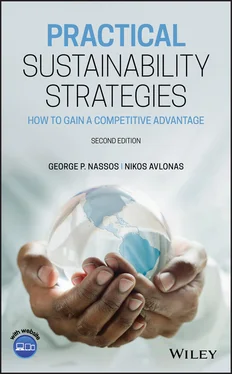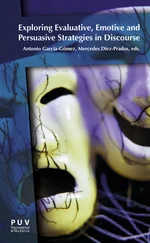The right of George P. Nassos and Nikos Avlonas to be identified as the authors of this work has been asserted in accordance with law.
Registered Office
John Wiley & Sons, Inc., 111 River Street, Hoboken, NJ 07030, USA
Editorial Office
111 River Street, Hoboken, NJ 07030, USA
For details of our global editorial offices, customer services, and more information about Wiley products visit us at www.wiley.com.
Wiley also publishes its books in a variety of electronic formats and by print-on-demand. Some content that appears in standard print versions of this book may not be available in other formats.
Limit of Liability/Disclaimer of Warranty
In view of ongoing research, equipment modifications, changes in governmental regulations, and the constant flow of information relating to the use of experimental reagents, equipment, and devices, the reader is urged to review and evaluate the information provided in the package insert or instructions for each chemical, piece of equipment, reagent, or device for, among other things, any changes in the instructions or indication of usage and for added warnings and precautions. While the publisher and authors have used their best efforts in preparing this work, they make no representations or warranties with respect to the accuracy or completeness of the contents of this work and specifically disclaim all warranties, including without limitation any implied warranties of merchantability or fitness for a particular purpose. No warranty may be created or extended by sales representatives, written sales materials or promotional statements for this work. The fact that an organization, website, or product is referred to in this work as a citation and/or potential source of further information does not mean that the publisher and authors endorse the information or services the organization, website, or product may provide or recommendations it may make. This work is sold with the understanding that the publisher is not engaged in rendering professional services. The advice and strategies contained herein may not be suitable for your situation. You should consult with a specialist where appropriate. Further, readers should be aware that websites listed in this work may have changed or disappeared between when this work was written and when it is read. Neither the publisher nor authors shall be liable for any loss of profit or any other commercial damages, including but not limited to special, incidental, consequential, or other damages.
Library of Congress Cataloging-in-Publication Data
Names: Nassos, George P., author. | Avlonas, Nikos, 1969- author.
Title: Practical sustainability strategies : how to gain a competitive advantage / George Peter Nassos, Principal, George P. Nassos & Associates, Inc., Nikolaos Demetrios Avlonas, Founder and President Center for Sustainability & Excellence.
Description: Second edition. | Hoboken, NJ : Wiley, 2020. | Revised edition of: Practical sustainability strategies / Nikos Avlonas, George P. Nassos. [2014]. | Includes bibliographical references and index.
Identifiers: LCCN 2019051480 (print) | LCCN 2019051481 (ebook) | ISBN 9781119561040 (hardback) | ISBN 9781119561125 (adobe pdf) | ISBN 9781119561095 (epub)
Subjects: LCSH: Business enterprises–Environmental aspects. | Industrial management–Environmental aspects. | Sustainable development. | Social responsibility of business.
Classification: LCC HD30.255 .A96 2020 (print) | LCC HD30.255 (ebook) | DDC 338.9/27–dc23
LC record available at https://lccn.loc.gov/2019051480
LC ebook record available at https://lccn.loc.gov/2019051481
Cover design by Wiley
Cover image: © Blend Images - REB Images/Getty Images
PREFACE OF GEORGE P. NASSOS
About 40 years ago, I had the fortune to work for a subsidiary of an American international chemical company that was headquartered in Cologne, Germany. While experiencing many great times during the three years I lived in Europe, there were a few that stood out because of their impact on the natural environment and energy efficiency. Here are three that I will never forget as they planted the seed in my interest in sustainability.
1 I was walking to the subway and had to take the escalator to the lower level. When I arrived for the first time, I was disappointed that the escalator was not operating. So I did what I would normally do under such a circumstance—walk down the stationary escalator. As soon as I took the first step to walk down, the escalator started and continued to operate until I reached my destination. With no one else on the escalator, it stopped when I got off. There was a pressure switch under the first step that activated the motor. That really made sense. Why should it be operating when no one was using the escalator?
2 I was participating in a business meeting at a high-rise office building in the La Defense suburb of Paris. Sitting in a conference room on about the 40th floor with nothing but windows on the outside wall, I couldn't help but notice that from time to time the lights would go off and later come back on. After witnessing this occurrence two or three times, I asked the hosts if they were having problems with their electrical supply. I was embarrassed to learn that light sensors controlled the need for artificial light when the sunlight was insufficient. The turning on and off of the lights on that day was due to a partly cloudy day.
3 I lived in an apartment building two blocks from the Rhine River and about six or seven kilometers south of the city center where the company office was located. My commute to the office was by driving on a four-lane boulevard along the river. About every kilometer or less were intersections with stoplights to allow traffic to enter or exit the boulevard. In addition to these traffic lights at the intersections, digital signals existed on the boulevard about midway between the intersections. These digital signals would indicate what speed the cars should travel in order to arrive at the next intersection with a green light. This system provided several benefits like reduced fuel consumption, reduced emissions, reduced congestion, and reduced stress. I am not sure how many years this system was in operation prior to my experiencing it, but it surely made sense.
After working for the chemical company for 16 years, I returned to the United States and joined an environmental company for the next 15 years. A combination of my experiences in Europe and Germany, in particularly, along with the environmental company convinced me that this was a field of great interest. I then decided to enter the academic field and combine by chemical and environmental background with my business background (as I also have an MBA) and teach at a graduate business school. I wanted to offer students a combination of teaching theory as well as my business experiences in the real world. I was fortunate to learn that the Illinois Institute of Technology—Stuart School of Business had just developed a new program—MS in Environmental Management, and the dean was looking for a director of the program. This was a great fit for both the school and me.
During my first year at the school in 1997, I attended a conference sponsored by the World Resources Institute focusing on environmental and social sustainability. About 150 people attended this annual conference with about 70% from academia and the balance from the business and government sectors. I had never heard of this topic, but I found it extremely interesting. The following year I attended the conference again, and after this second experience I was convinced that sustainability was very, very important. During the next academic year, I introduced sustainability into the capstone course I was teaching and renamed it “Business Strategy: The Sustainable Enterprise.” Over the next few years, I introduced the sustainability concept in other courses and shortly thereafter changed the program name to MS in Environmental Management and Sustainability. This program was eventually ranked No. 11 in the world by the Beyond Grey Pinstripes biennial survey.
Читать дальше












